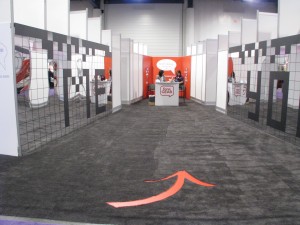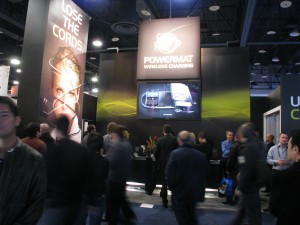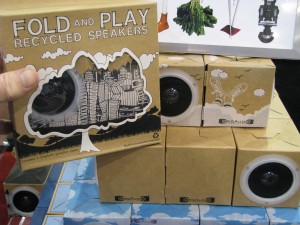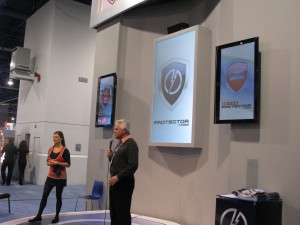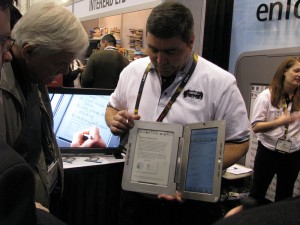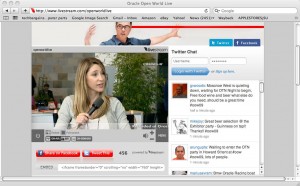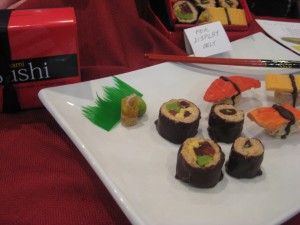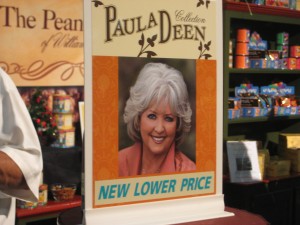This show didn’t have the excitement of June in NYC, which may be due to the fact that the west coast was harder hit by the recession than the Northeast. (Though many of the same vendors exhibit at all the shows in SF, Chicago and NYC, merchants tend to go to the show closest to them.) There were some empty booths, but good floor traffic. Three trends I noted:
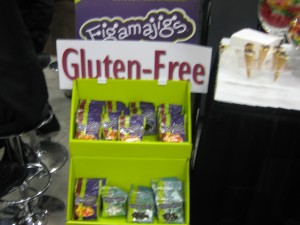
1. Gluten-free everything. People with celiac disease can’t eat gluten, but for most of the rest of us it’s the wheat protein enhanced during kneading that makes rustic bread chewy and delicious. But marketers seemed to have sensed a trend that “free” of anything equates healthy goodness, so there are many booths advertising “gluten-free” products that would never contain gluten in the first place.
2. Pizza. Lots and lots of frozen gourmet pizzas are on hand, designed to be sold at $6 or more for an individual-size pie. Also a lot of flatbreads that are advertising themselves as pizza foundations.
3. Old-timey packaging. There are an increasing number of packagers trying to make their product look like it has been around for 150 years, with accompanying benefits of heritage and nostalgia and old time values, even if it just came to market. Correspondingly, there’s less of the light and bright “lightbox” look (I call it that because the products are designed to look great when lit from below on a shelf) that has been popular in recent years.
I did a taste comparison of high end vodka pasta sauces, which were easy to find on the floor. I’d had the real thing, more or less, at Rao’s in Las Vegas last week, and the ones I tasted (included jarred Rao’s as well as Mario Batali) suffered in comparison less from being preserved than from being dumbed-down in flavor and salt. Marketers, no doubt with lots of consumer research backing them up, have decided that the product’s personality should come from the face on the label, rather than the actual taste.
This show is not blogger-friendly, by the way. I registered as a media “trade affiliate” which I won’t do again. Maybe guessing I am not a serious buyer, some boothers tend to pull back the sample tray as I approach. Or maybe they’re just worried I am going to suitcase them.
